Student Research
2025 Synthesis Day Research
Read more on a selection of student research posters presented at the 2025 Kaleckas Lecture and Synthesis Day.
Evaluating a Novel Precise Measure of Flexion Synergy Expression in the Hand in Individuals With Chronic Stroke
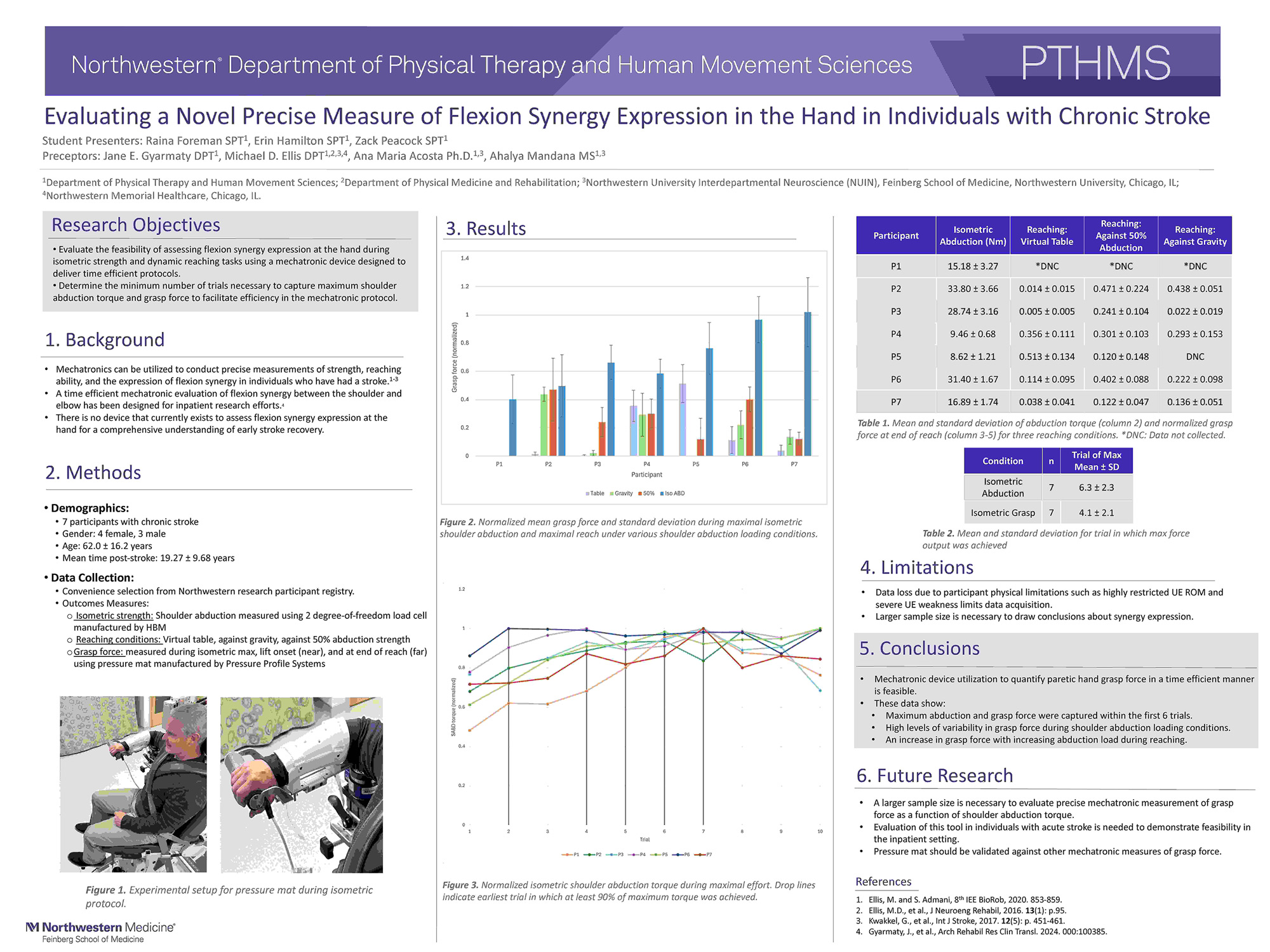
Loss of independent joint control is a common and debilitating functional limitation following hemiparetic stroke. In the upper extremity, this manifests in the expression of flexion synergy: the involuntary coupling of flexion at the elbow, wrist, and fingers with abduction of the shoulder. Recent investigations have quantified flexion synergy expression between the shoulder and elbow via mechatronic devices with intent to use these devices to enhance recovery in the inpatient rehabilitation setting. A precise measure of flexion synergy expression in the hand has yet to be developed and implemented in this setting.
Here we use mechatronic devices to quantify paretic hand grasp force under seven shoulder abduction loading conditions. In seeking to maximize the efficiency of a mechatronic protocol, the minimum number of trials necessary to capture maximum shoulder abduction torque and grasp force was also investigated.
Incorporating Scalable Movement Technology in DPT Curriculum
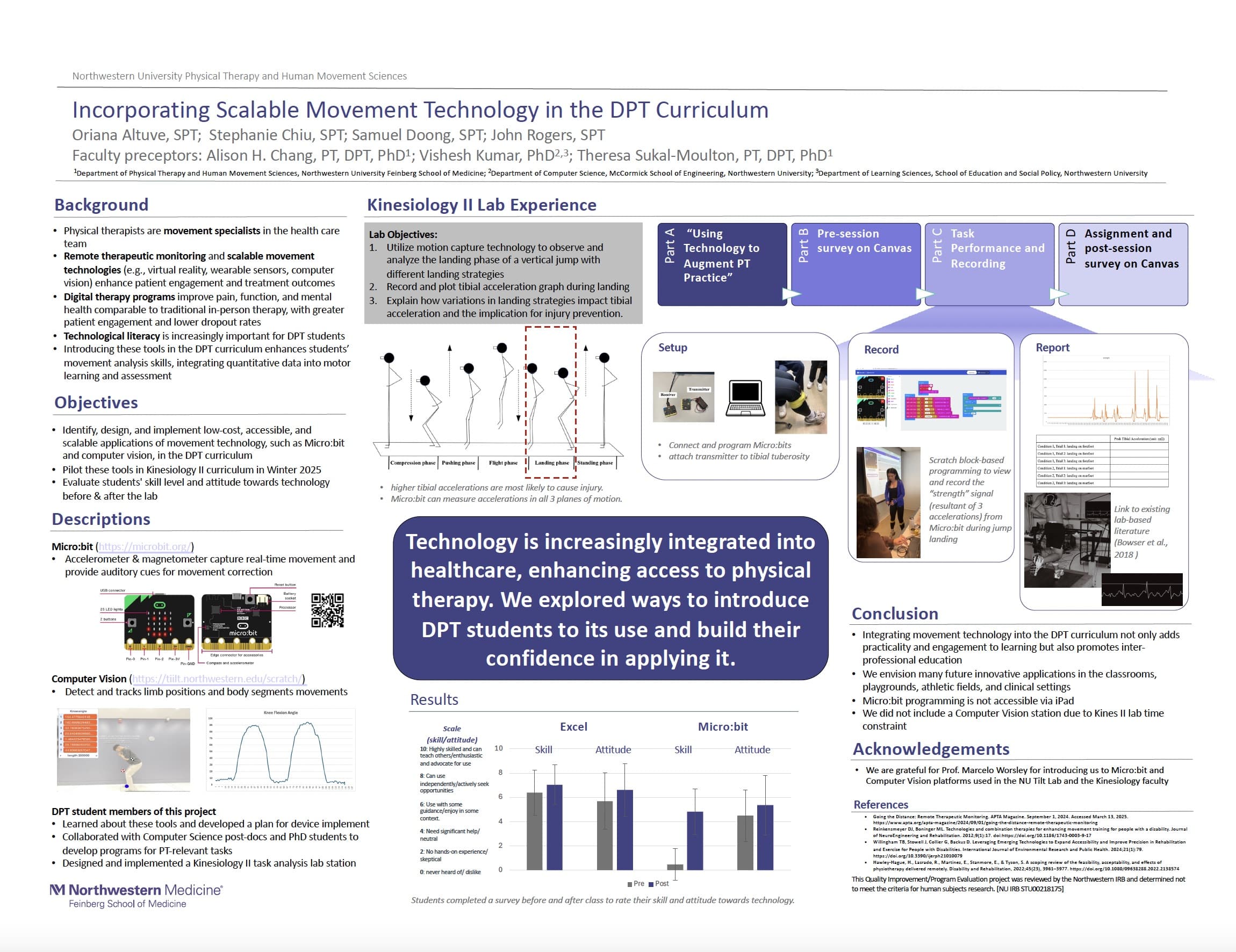
Recent advancements in remote therapeutic monitoring and scalable movement technologies (e.g., wearable sensors, computer vision) are transforming physical therapy by enhancing patient engagement and treatment outcomes. Digital therapy programs have shown improvements in pain, function, and mental health comparable to traditional in-person therapy, with greater patient engagement and lower dropout rates. These technologies provide real-time data for personalized care, improve accessibility and support in-home therapy. Therefore, technological literacy is increasingly important for DPT students.
This project aimed to identify, design, and implement a low cost, accessible, and scalable application of movement technology (e.g. Micro: bit, computer vision) to measure body segment acceleration and joint angles during functional movements in the DPT curriculum. By introducing these tools, the project helps enhance DPT students’ expertise as movement specialists, enabling them to use quantitative data to assess and track movement and promote motor learning.
Optimizing Stroke Rehabilitation: Using Therapy Metrics to Discriminate Responders in Functional Outcomes
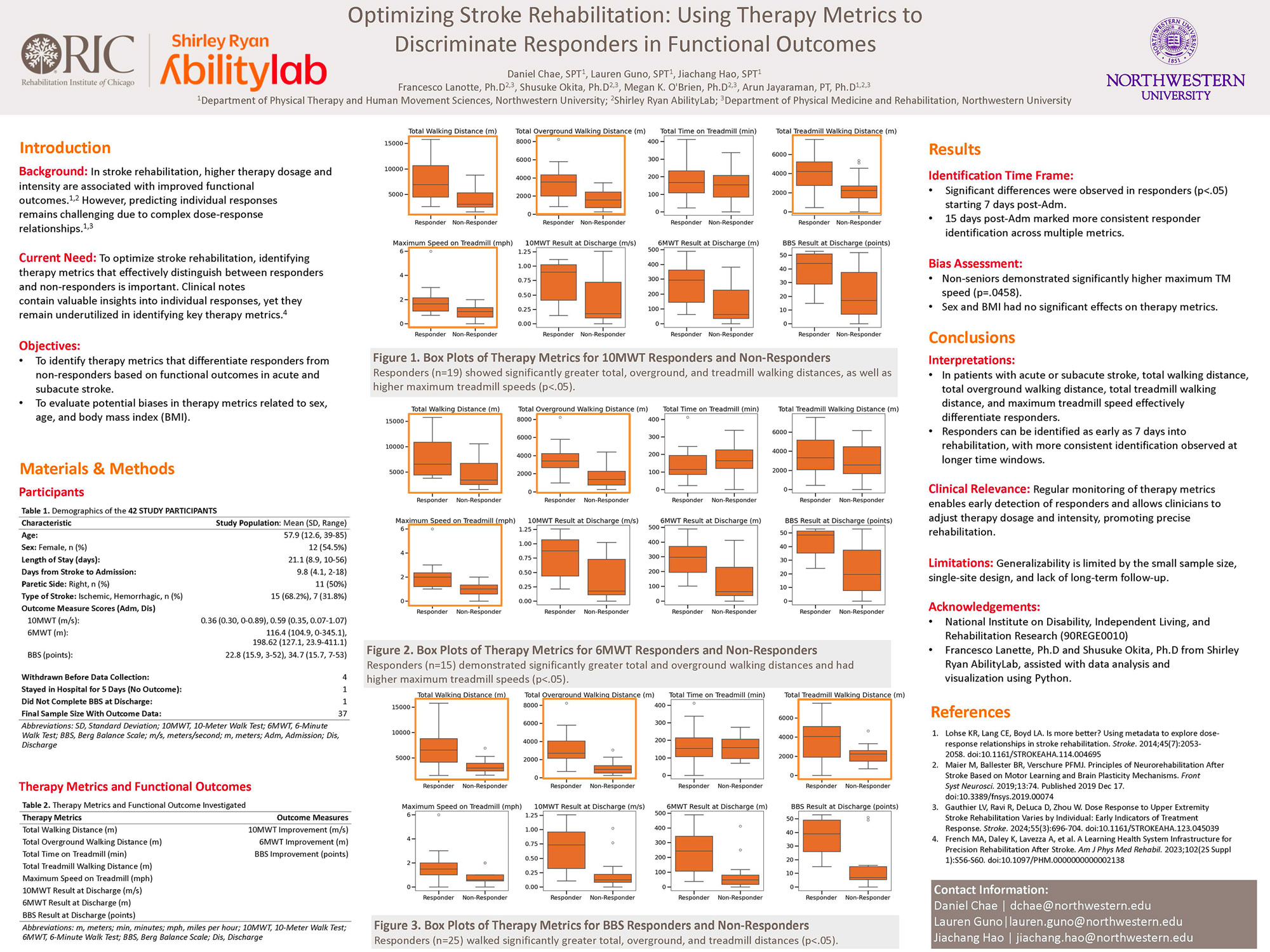
In stroke rehabilitation, increased therapy dosage and intensity correlate with better outcomes. However, predicting individual responses is challenging due to complex dose-response relationships. For clinician to deliver precision rehabilitation, wherein different interventions are targeted toward those most likely to benefit, factors related to a patient’s expected or demonstrated responsiveness to therapy must be considered.
Clinical notes, written by therapists for each therapy session, document treatment details and patient performance outcomes offering insights into these individual responses. We hypothesize that therapy metrics can differentiate responders from non-responders during traditional rehabilitation care.
The Impact of Medical Diagnosis on Access to Early Therapy Through Part C IDEA-A Scoping Review
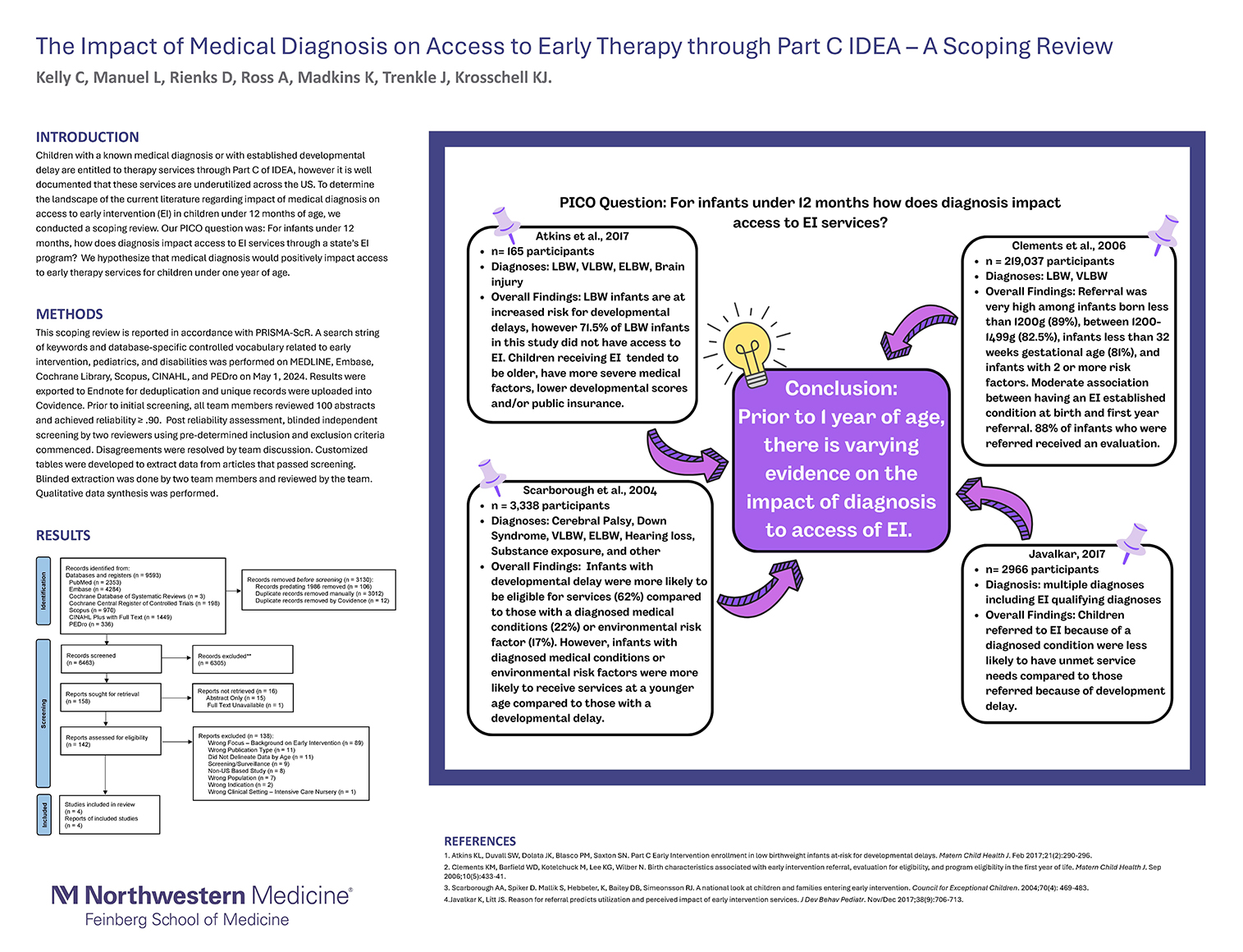
Children with a known medical diagnosis or with established developmental delay are entitled to therapy services through IDEA Part C, however it is well documented that these services are underutilized across the US. Additionally, each state has varying criteria for automatic enrollment into Early Intervention using medical diagnoses.
To determine the landscape of the current literature regarding impact of medical diagnosis on early intervention access for children under 12 months of age, we conducted a scoping review with the PICO question: For infants under 12 months, how does diagnosis impact access to services through a state’s early intervention program? We hypothesized that medical diagnosis would positively impact access to early therapy services for children under one year of age.
A Randomized Pilot Test of the Breast Cancer Pre-habilitation and Prospective Surveillance to Optimize Physical and Functional Recovery (B-PREPeD) Study
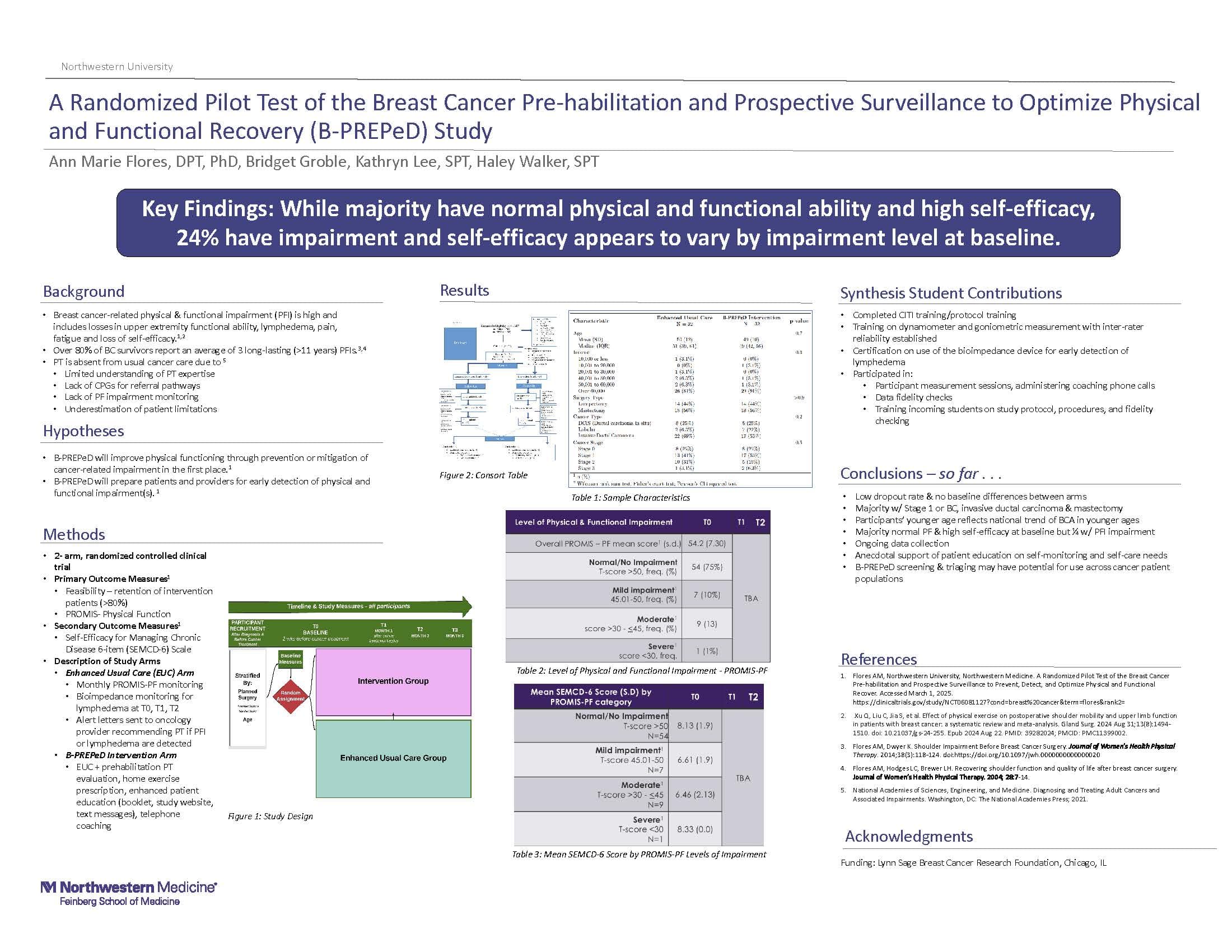
Breast cancer and its treatment are associated with physical and functional impairments (PFIs, e.g. joint pain, fatigue, muscle weakness, loss of range of motion, altered skin sensation/neuropathy, postural abnormality, skin integrity, and lymphedema). Breast cancer related PFIs negatively affect patient confidence and overall functional ability. Over 80% of breast cancer survivors report an average of 3 long-lasting (>11 years) PFIs. Although physical therapy is the main discipline in cancer rehabilitation for treating PFIs, it is not considered a priority for standard oncology care due to limited knowledge of PT expertise, lack of surveillance, and underestimation of patient limitations.
The purpose of this study is to evaluate the feasibility and potential effects of a 6-month program that starts when breast cancer treatment begins and a prehabilitation physical therapy evaluation, home exercise prescription, self-management education materials (booklet and website) and a PFI system that alerts the patient and her oncology team to the need for cancer rehabilitation/physical therapy.
Barriers and Facilitators to Seeking Outpatient Physical Therapy Following Emergency Department Referral
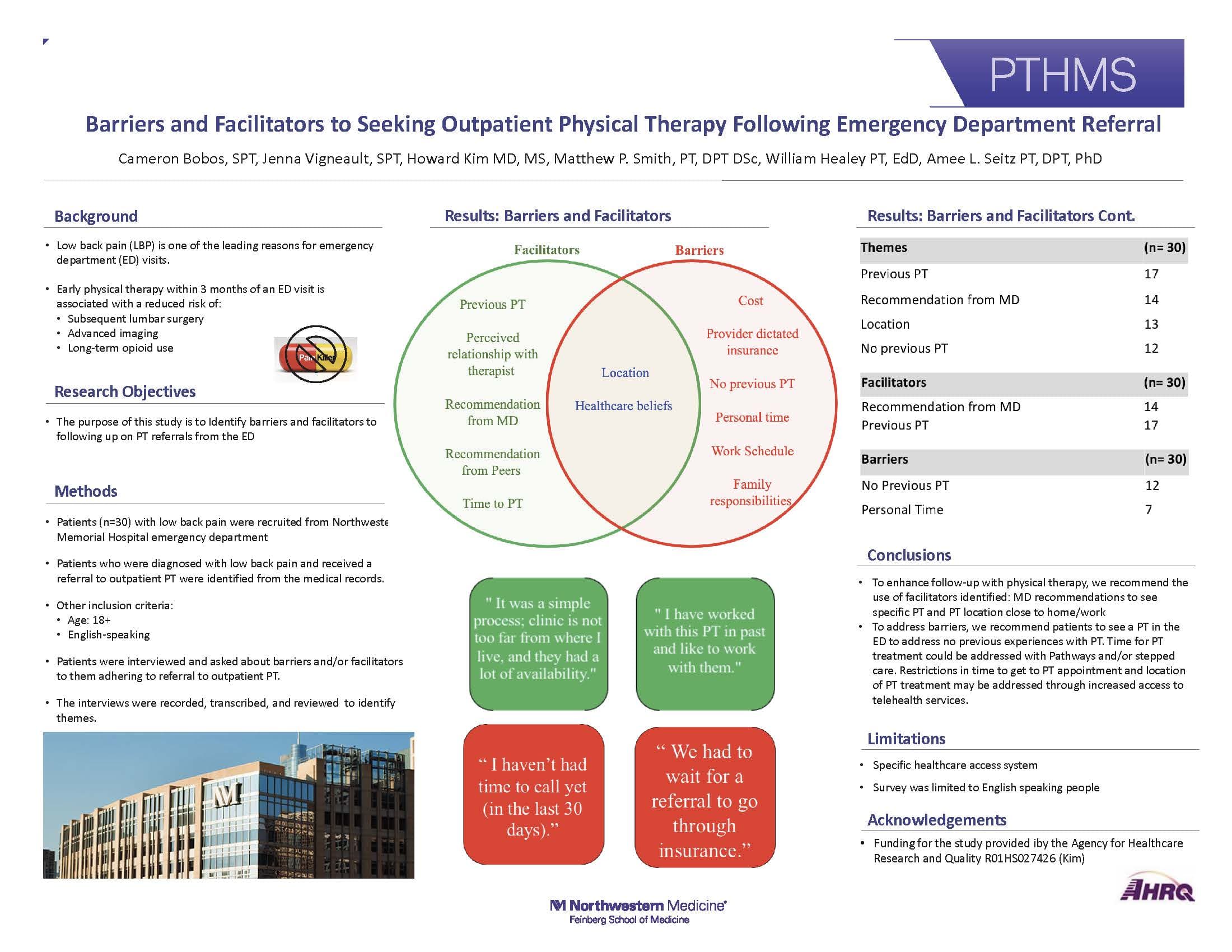
Low back pain is one of the top ten reasons for a visit to the Emergency Department. Of the patients seen for non-urgent low back pain, 42% have moderate-severe pain and nearly half have persistent functional loss 3 months later. Studies show the benefits of early physical therapy following an visit to the Emergency Department for low back pain with reduced risk of subsequent lumbar surgery, need for advanced imaging, and reduction of long-term opioid use. Yet less than 15% of patients see a physical therapist after being referred. The purpose of this study is to identify barriers and facilitators of outpatient PT care after a referral from a physician for acute low back pain.